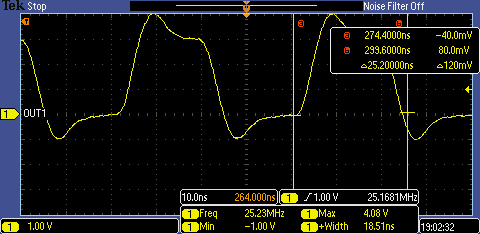I have a project where I will need to count pulses with widths of 9ns. I saw this:
"The MSP430F51x1/51x2 have two TimerD units supporting up to 256MHz input clock..."
and I looked through the MSP432 and didn't see that it has a similar capability. Are the MSP430F51x1/51x2 the only ones capable of 256MHz operation?


